Growing Texas perennials can sometimes be a disheartening experience for many gardeners. Extreme temperatures, blistering heat, and relentless sunshine make it difficult for perennials to survive.
In this article, we will look at 22 of the hardiest perennials to plant if you are from North or South Texas.
Perennials are plants that can live for several years. They return year after year to bloom again in your garden from the same roots. Perennials come in all different colors, shapes, and sizes. They also require different amounts of sunlight and soil types to help them thrive.
Along with the scorching temperatures, gardening in Texas comes with clay and dry soil, making planting perennials difficult. Ensuring the earth is well fertilized and rich in compost and expanded shale before planting is essential for the success of your Texas perennials.
Factors to consider when planting a perennial garden in North and South Texas are:
- Selecting the right perennials specific to your climate.
- Choosing the proper height.
- Deciding on the desired color scheme.
These requirements are essential for maintaining a low-maintenance flower garden to be proud of all season long. Here are some excellent choices for perennials to plant in North and South Texas.
Best Perennials for North Texas
There is a vast assortment of perennials to choose from that are excellent to grow in Northern Texas. Here is a list of our favorite 12 North Texas perennials.
Bee Balm
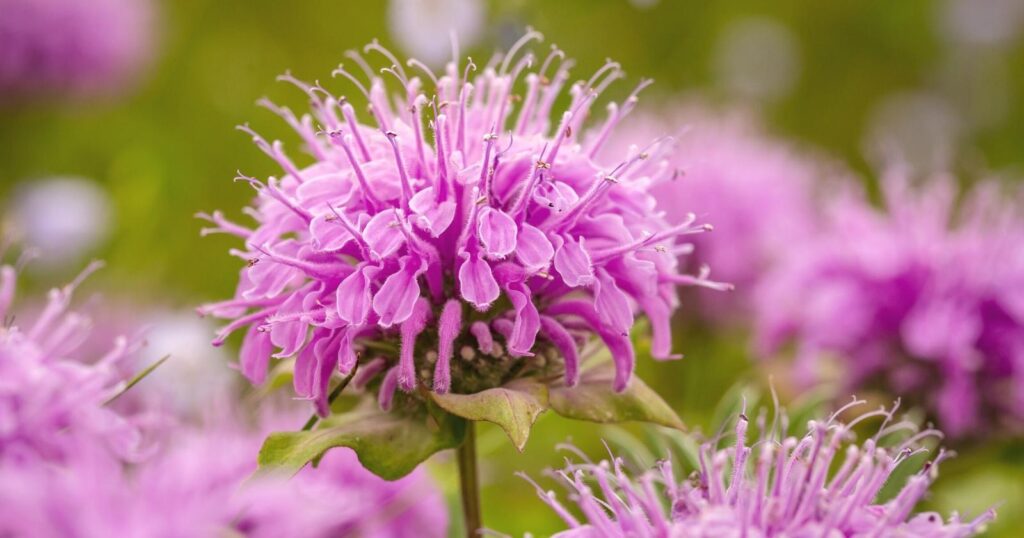
Scientific Name: Monarda didyma
- Soil type: Well-drained
- Plant height: 3 to 4 feet
- Plant width: 18 to 24 inches
- Sun exposure: Full to partial sun
- USDA zones: 3 to 9
A member of the mint family, Bee Balm flowers are edible and can be used to make herbal tea. This gorgeous perennial comes in various brightly colored red, purple, or pink flowers that attract hummingbirds, bees, and butterflies to your flower beds with their aromatic scents.
This flower grows from June to August and thrives best when planted in full North Texan sun. It can also handle partial shade. Apply fertilizer to this gorgeous perennial early in the growing season and water every couple of days for optimum growing results.
Black-eyed Susan
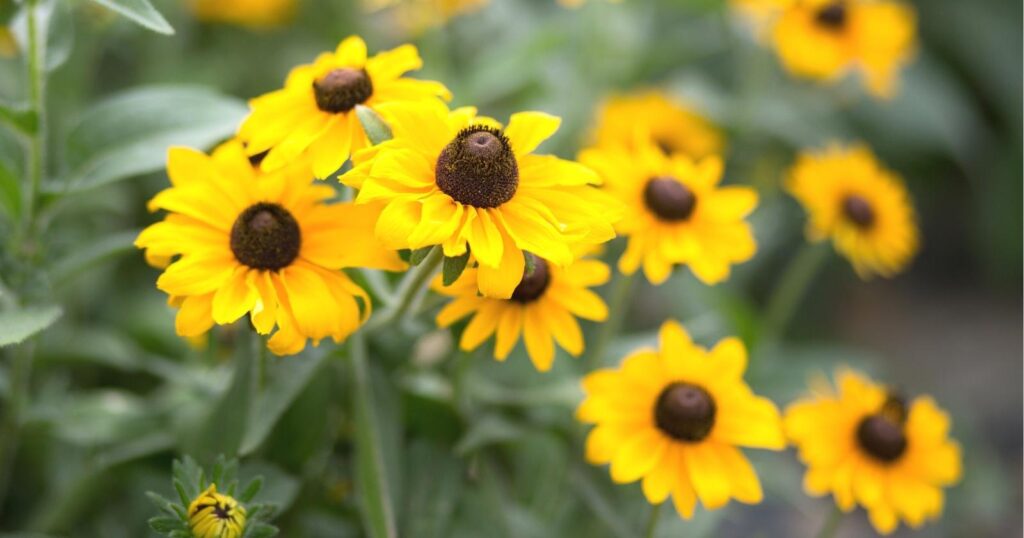
Scientific Name: Rudbeckia fulgida ‘Goldsturm’
- Soil type: Moist, well-drained
- Plant height: 1 to 3 feet
- Plant width: 12 to 18 inches
- Sun exposure: Full or partial sun
- USDA zones: 3 to 9
A lengthy blooming perennial, Black-eyed Susan’s are easy to grow in the North Texas sun from summer to fall. A beautiful yellow and black, long-stemmed flower, Black-Eyed Susan’s resembles a daisy. They attract butterflies to your flower beds and make an excellent cut flower for arrangements or in a vase.
These beautiful flowers will bloom the whole growing season if dead heads are faithfully removed. This perennial does best in full sun with partial shade in the afternoons. Adding fertilizer to their water once or twice a week will help extend their blooms during the growing season. Fertilizing the soil annually also encourages more optimum growth potential.
The Bird of Paradise
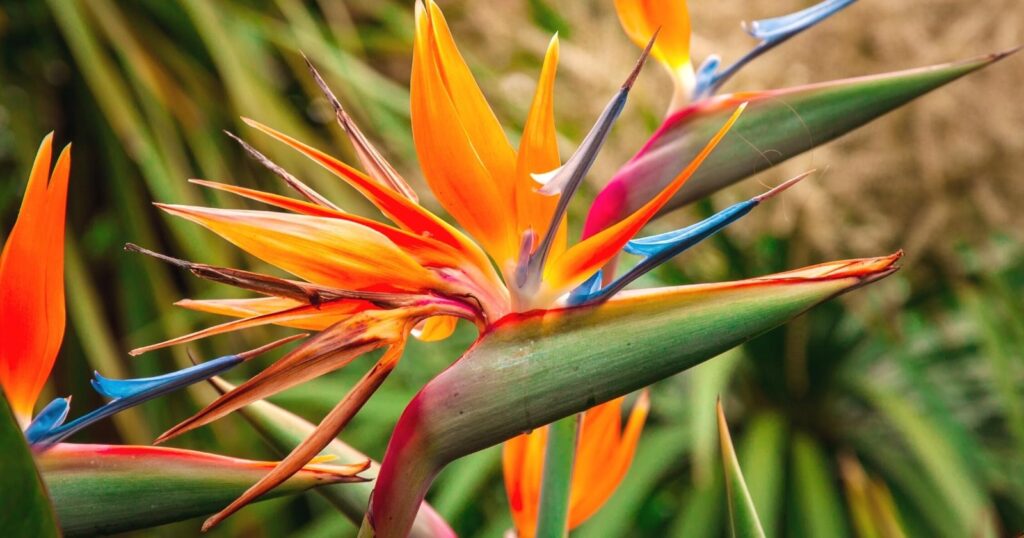
Scientific Name: Caesalpinia gilliesii
- Soil type: Moist
- Plant height: 4 to 6 feet
- Plant width: 14 to 6 feet
- Sun exposure: Full sun
- USDA zones: 10 to 12
A robust flower, the Bird of Paradise, offers yellow blooms and long red stems to your North Texas perennial garden. Its colorful beauty attracts hummingbirds, bees, and butterflies to your flower beds.
These exotic flowers take several hours to open, and their full beauty can be seen by mid-afternoon. Blooms are short-lived, only lasting one day.
For best results, plant in nutrient-rich soil with full sunlight or small amounts of shade. This flower thrives in moist soil, But it does not do well if the soil is too wet or water-logged.
Chinese Pistache Tree
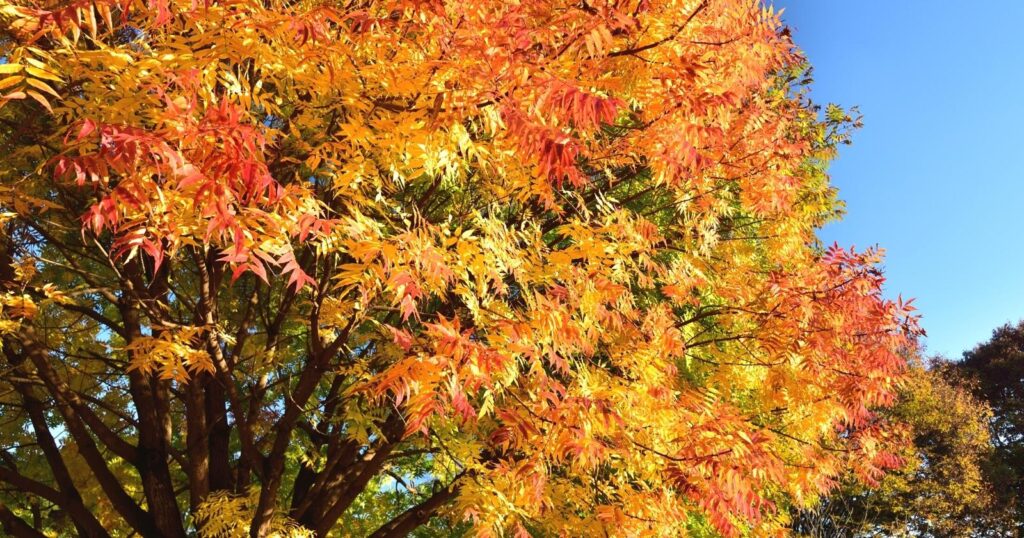
Scientific Name: Pistacia chinensis
- Soil type: Well-drained
- Plant height: 2 to 3 feet
- Plant width: 12 to 24 inches
- Sun exposure: Full sun
- USDA zones: 3 to 7
A slow-growing perennial, the Chinese Pistache Tree produces green flowers from April to May. The female tree has vibrant red berries in the fall that cannot be consumed by humans but are a treat for birds. The leaves of the tree also turn a gorgeous orange color in the fall and are very pleasing to view.
A full-grown tree can average 35 to 50 feet in height and up to 30 feet in width. It provides a great source of shade and yard coverage. Although the Chinese Pistache Tree prefers full sunlight and well-drained soil, it also grows well in all soil types of North Texas.
Fall Aster
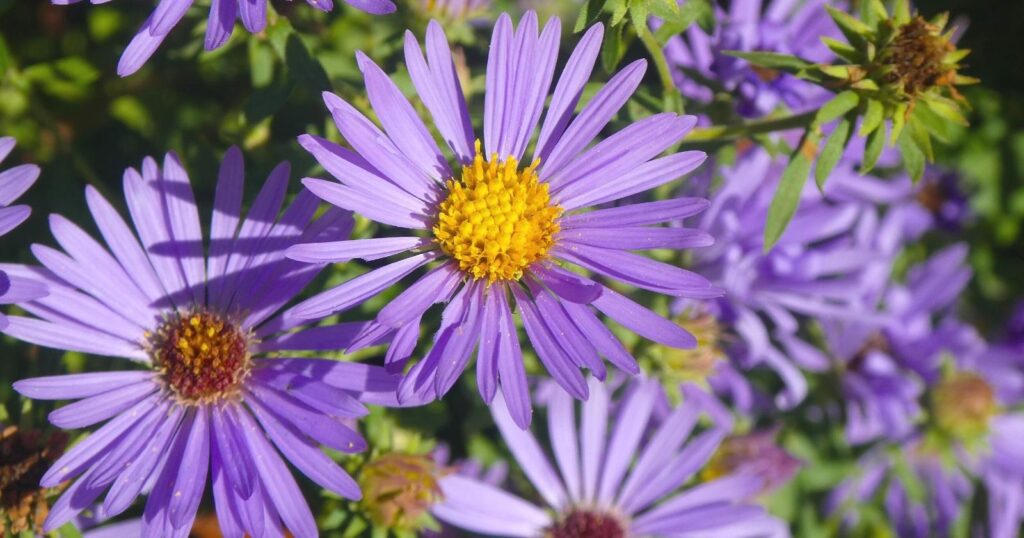
Scientific Name: Symphyotrichum oblongifolium
- Soil type: Well-drained
- Plant height: 1 to 2 feet
- Plant width: 2 to 3 feet
- Sun exposure: Full sun
- USDA zones: 3 to 8
This beautiful violet-blue fall perennial blooms from September to the first frost of the growing season. The Fall Aster does its best when planted in full sun and is tolerant to drought.
This flower is also hardy and is pest and disease resistant. For best results, trim and divide often to prevent it from spreading out of control.
Lantana
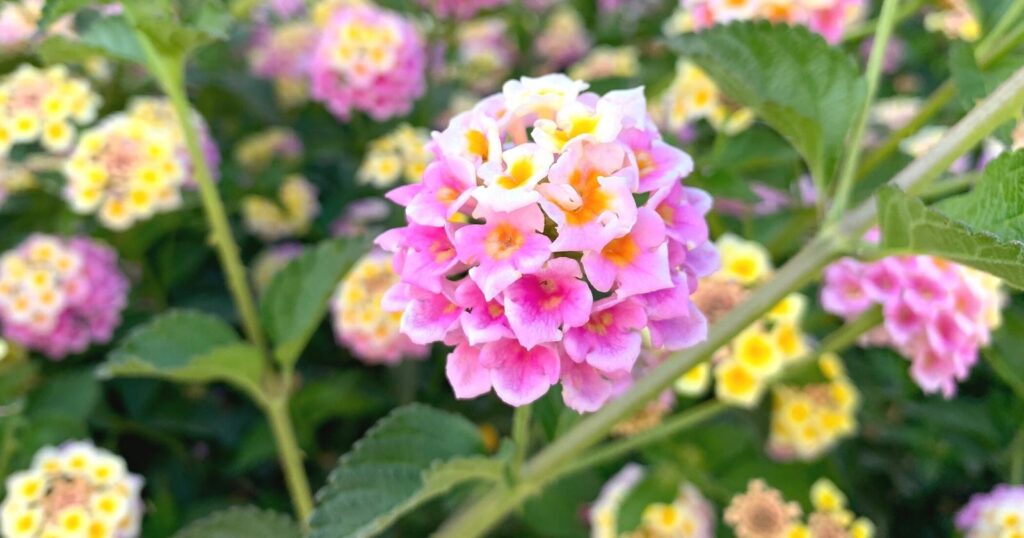
Scientific Name: Lantana horrida
- Soil type: Well-drained
- Plant height: 2 to 6 feet
- Plant width: 3 to 10
- Sun exposure: Full sun
- USDA zones: 8 to 11
This tiny shrub is another perennial that grows well in North Texas. Heat and drought tolerant, the Lantana offers multi-colored clusters of flowers that range from yellow, orange, and red. This vibrant flower attracts hummingbirds and butterflies to your garden. Birds also enjoy the seeds from the flowers.
These flowers bloom from spring until the first frost of fall and will add a splash of color to any garden.
For best results, the Lantana prefers to be planted in full sun. It also thrives in well-drained soil but can survive in many Texas soil types as long as it receives a good watering once weekly. The occasional trim throughout the flowering season will also promote more vigorous blooms.
Oxblood Lily
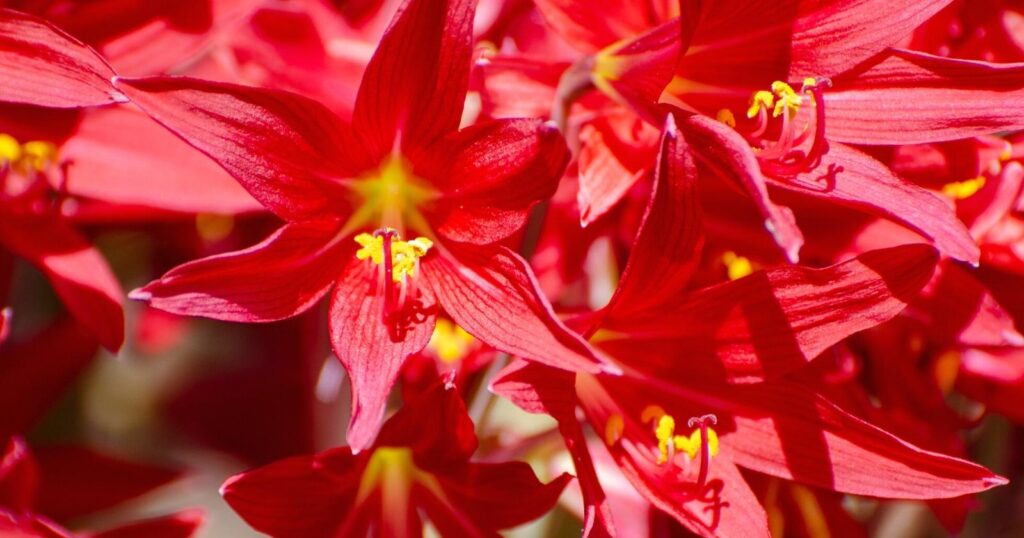
Scientific Name: Rhodophiala bifida
- Soil type: Well-drained
- Plant height: 6 to 12 inches
- Plant width: 6 to 12 inches
- Sun exposure: Full to partial sun
- USDA zones: 7 to 11
This fall-blooming perennial is vibrant red-colored and offers a touch of exotic elegance to any garden. The lush flowers of the Oxblood Lily are a strong magnet for attracting hummingbirds to your flower beds.
Heat and drought resistant, the Oxford Lily feeds on spring rain to develop its flowers and beautiful foliage. They also require at least 6 to 8 hours of sun a day to maintain their blooms.
This gorgeous fall favorite is a popular choice for North Texan gardeners looking to brighten up their garden space.
Mexican Mint Marigold
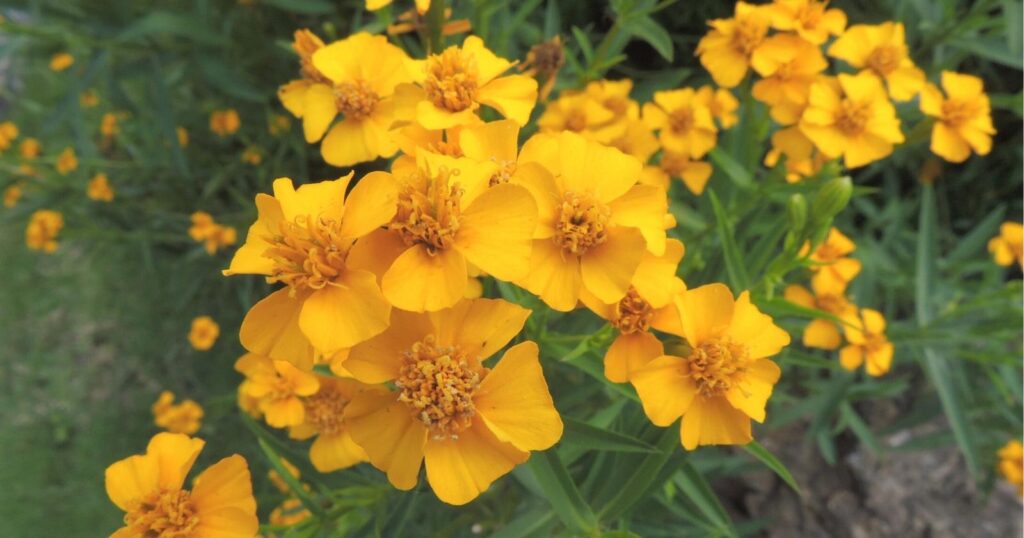
Scientific Name: Tagetes lucida
- Soil type: Well-drained
- Plant height: 3 feet
- Plant width: 2 feet
- Sun exposure: Full to partial sun
- USDA zones: 8 to 11
This flower is a compact-sized perennial that looks similar to the marigold. The Mexican Mint Marigold has beautiful yellow flowers, is easy to grow, and provides fragrant blooms that last from summer to late fall.
A widespread perennial in North Texas, the Mexican Mint Marigold is heat and drought resistant and is known to attract butterflies to your garden. This beautiful flower thrives in the full Texan sun and is a favorite among many North Texas gardeners.
Marigolds of all types also offer beneficial properties when being planted alongside vegetables and other garden plants.
Purple Cone Flower
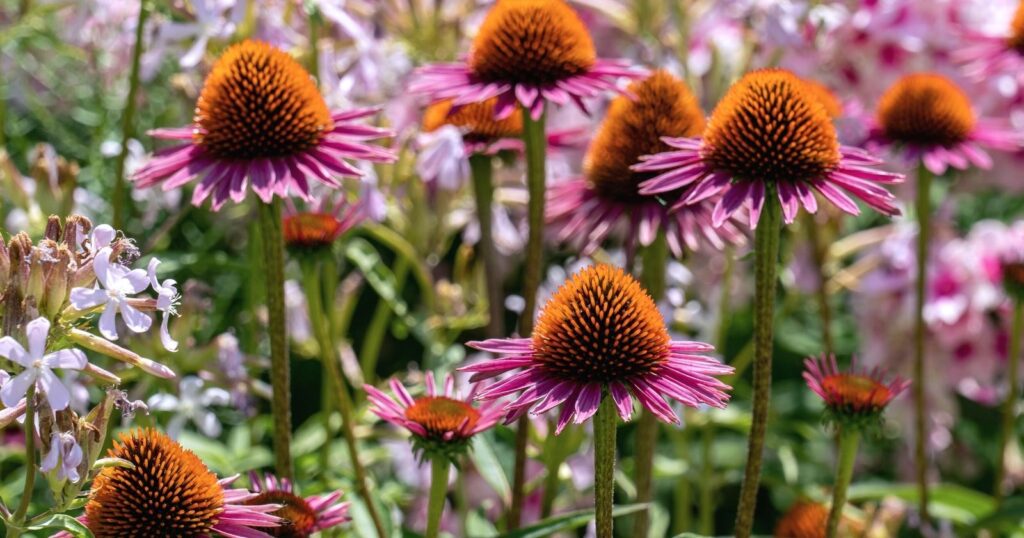
Scientific Name: Echinacea purpurea (Asteraceae); Echinacea angustifolia
- Soil type: Well-drained
- Plant height: 3 feet
- Plant width: 1.5 feet
- Sun exposure: Full sun
- USDA zones: 3 to 9
Thanks to its daisy-like flowers with soft pink or lavender petals and strong stems, the Purple Cone Flower is another well-loved perennial to North Texas gardeners. They make the perfect backdrop for your flower bed because of their long stems.
The Purple Cone Flower is an attraction to bees and butterflies that offers blooms all season long from June through October and makes beautiful cut flowers.
Texas Rock Rose
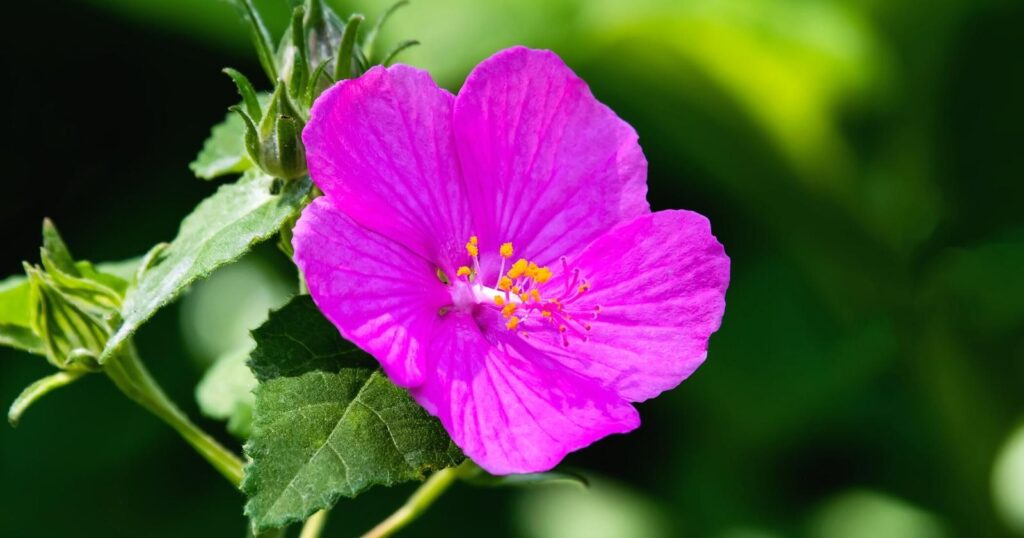
Scientific Name: Pavonia lasiopetala
- Soil type: Flower and rose food
- Plant height: 3 to 4 feet
- Plant width: 3 feet
- Sun exposure: Sun or partial shade
- USDA zones: 8 to 9
A shrub that grows well in North Texas, the Texas Rock Rose produces tiny pink flowers. These flowers open up in the morning and close again in the afternoon to avoid the hot sunlight. Tolerant of drought, the Texas Rock Rose can prosper in any type of soil.
This beautiful shrub blooms from spring to fall and is a well-loved accent perennial found in many gardens throughout North Texas.
Texas Vitex
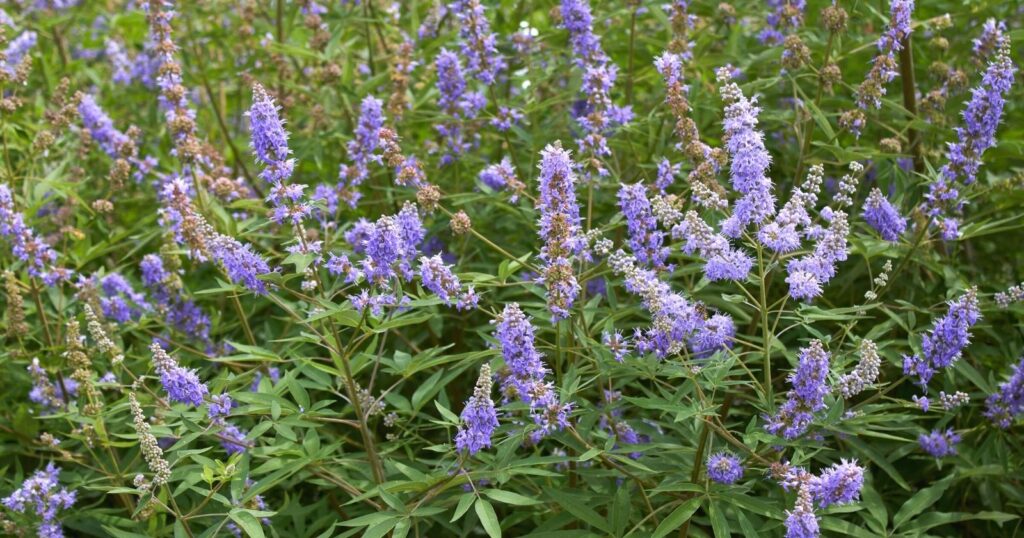
Scientific Name: Vitex agnus-castus
- Soil type: Well-drained
- Plant height: 10 to 15 feet
- Plant width: 15 feet
- Sun exposure: Full sun
- USDA zones: 6 to 9
Another favorite among North Texas gardeners, the Texas Vitex is a fast-growing perennial with low maintenance. The Texas Vitex produces spikes of lavender flowers that bloom from May to September.
This gorgeous purple shrub requires 6 hours of sunlight per day for optimum blooms. It is best to observe its beauty from afar because the sap from this plant can irritate the skin and may cause blisters that can be painful.
This purple beauty is a best-loved perennial among many North Texans.
White Rain Lily
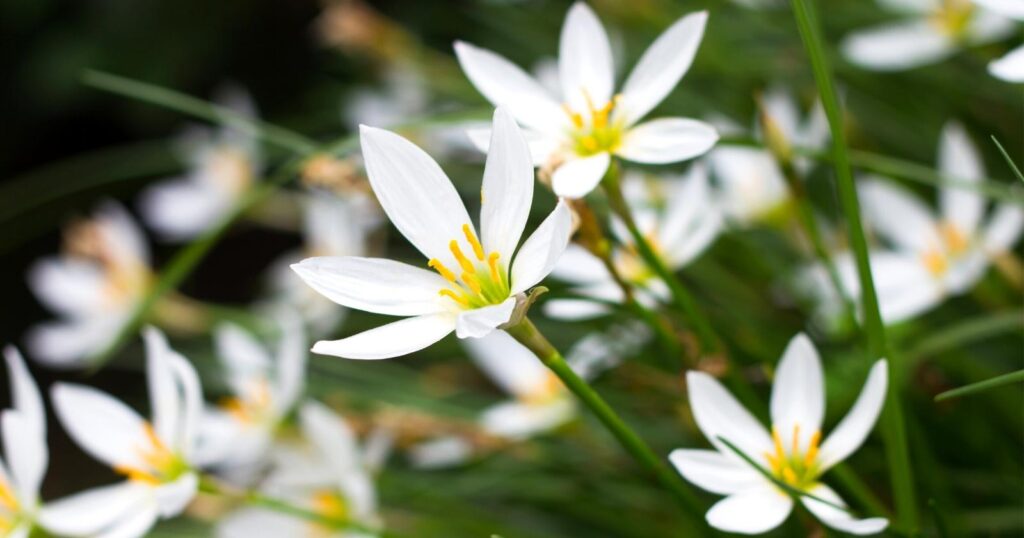
Scientific Name: Zephyranthes candida
- Soil type: Well-drained
- Plant height: 6 to 12 inches
- Plant width: 6 to 12 inches
- Sun exposure: Full sun
- USDA zones: 7 to 10
The blooms of this flower often come out after the rain, which gives it its unique name, the White Rain Lily. Used chiefly for garden borders and rock gardens, the beautiful silvery-white flowers resemble crocuses. They flower from late summer to fall and thrive in full sun and well-drained soil.
Best Perennials for South Texas
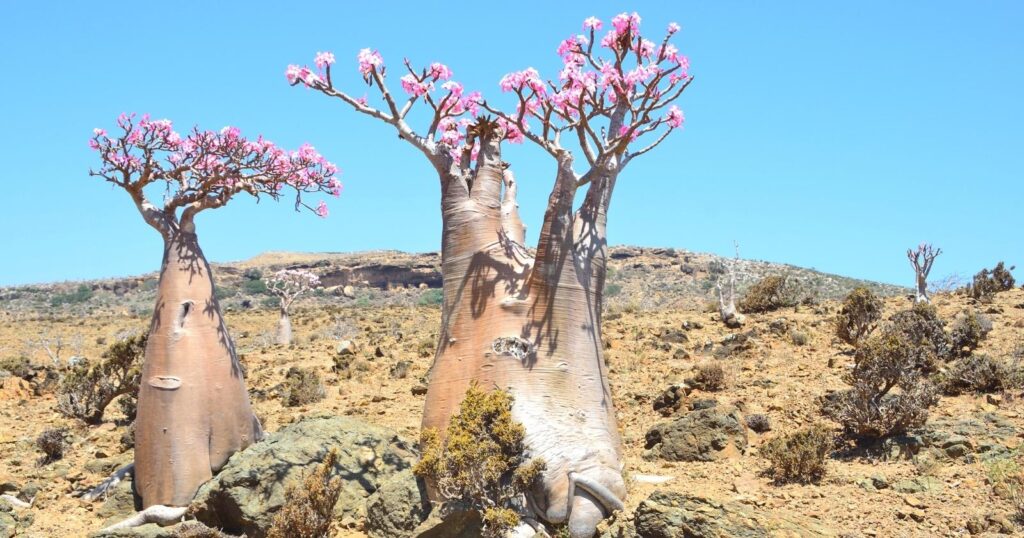
There is a vast assortment of perennials to choose from that are excellent to grow in Southern Texas. Here is a list of our favorite 12 South Texas perennials.
Australian Violet
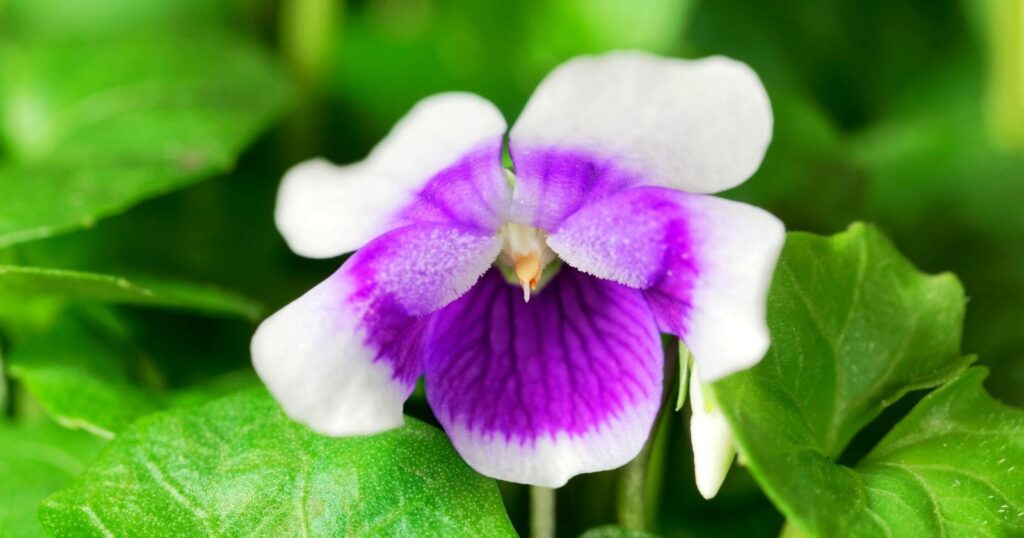
Scientific Name: Viola hederacea
- Soil type: Organic, moist
- Plant height: 4 to 6 inches
- Plant width: 12 to 16 inches
- Sun exposure: Partial sun or shade
- USDA zones: 7 to 9
This fast-growing perennial is perfect for South Texas gardens to use as a border or ground coverage. The flowers are a combination of white and purple petals that bloom from early spring to the first frost of fall.
The roots of the Australian Violet are very robust and will come back in spring, despite winter damage. This purple-colored perennial also boasts of being disease resistant and would make the perfect addition to your South Texas perennial garden.
Butterfly Weed
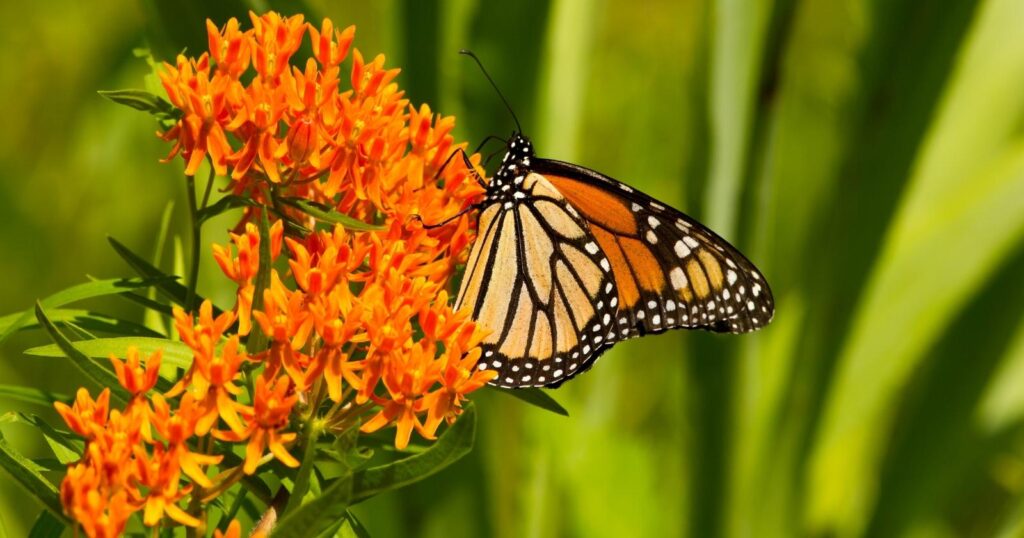
Scientific Name: Asclepias tuberosa
- Soil type: Well-drained
- Plant height: 3 feet
- Plant width: 1 to 2 feet
- Sun exposure: Full or partial sun
- USDA zones: 4 to 9
This robust perennial offers multi-colored red, orange, and yellow flowers that bloom from March to October. Known for attracting butterflies to the garden, the Butterfly Weed came by its name naturally.
This root hardy perennial is hard to kill off and will regrow in spring despite any winter damage it might suffer.
Desert Rose
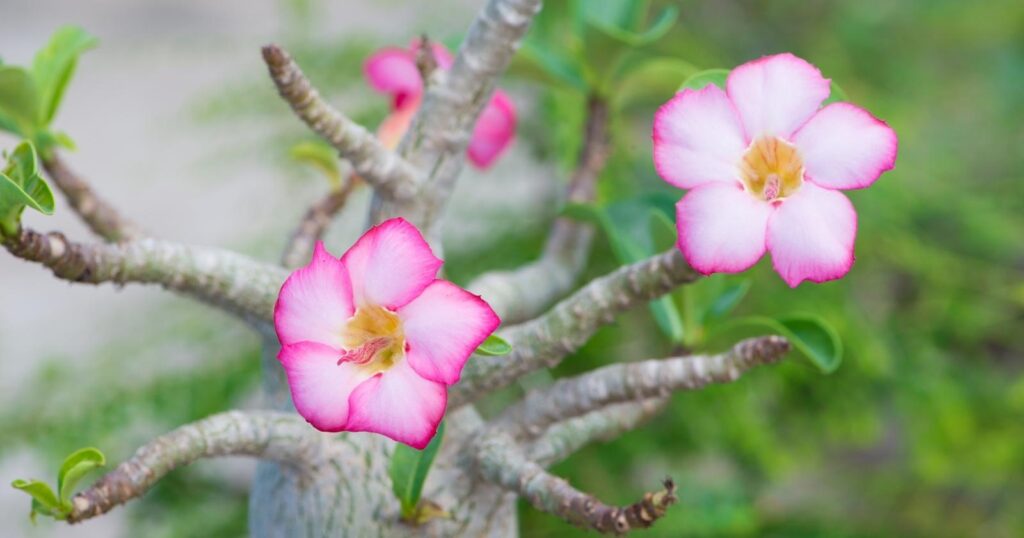
Scientific Name: Adenium obesum
- Soil type: Well-drained, slightly alkaline
- Plant height: 1 to 4 feet
- Plant width: 1 to 2 feet
- Sun exposure: Full sun
- USDA zones:10 to 12
This succulent South Texan favorite thrives in dry, sunny weather. Its flowers range in color from pink, white, and red and bloom throughout the warmer months of the year. The Desert Rose is even known to bloom in mild South Texas winters.
A perennial that is drought-resistant, the Desert Rose thrives in well-drained soil. It is better to plant this perennial in the spring and dig it before frost. If the Desert Rose is exposed to ice, it will not likely survive to bloom next year. It is also worth noting that the sap from the Desert Rose is toxic to both pets and humans.
Hibiscus
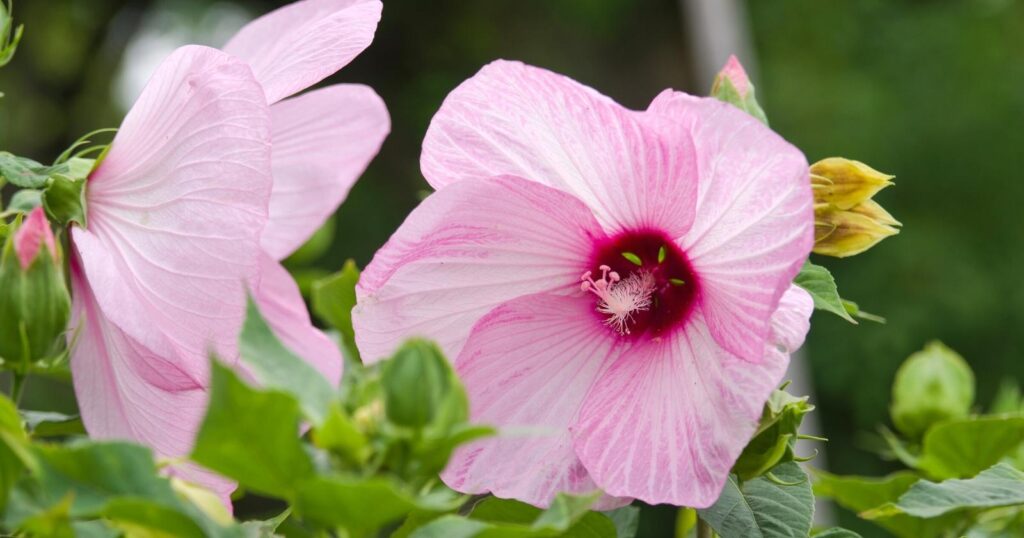
Scientific Name: Hibiscus spp.
- Soil type: Moist, well-drained
- Plant height: 3 to 10 feet
- Plant width: 2 to 8 feet
- Sun exposure: Full or partial sun
- USDA zones: 5 to 11
This vibrant perennial comes in various colors, including yellow, orange, pink, and red. The Hibiscus is considered the queen of South Texas garden landscaping for its eye-pleasing beauty and vibrant blooms.
Hibiscus shrubs offer vibrant displays of flowers that bloom from early spring until the first frost of fall. These perennials are an excellent choice for creating an impact at the front of your entranceway.
Golden Dewdrop
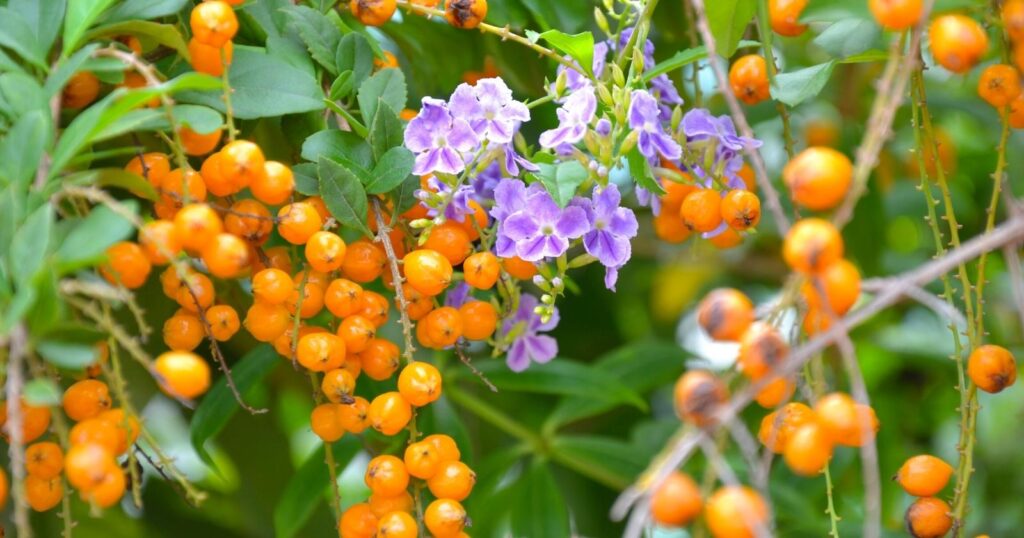
Scientific Name: Duranta erecta
- Soil type: Well-drained
- Plant height: 2 to 20 feet
- Plant width: 2 to 10 feet
- Sun exposure: Full sun
- USDA zones: 10 to 11
Don’t be fooled by its name. This fast-growing perennial comes in the form of shrubs or trees with gorgeous violet flowers. The golden part of the name comes from the clusters of golden berries the trees produce that give it a weeping look.
Golden Dewdrops are an excellent perennial to add to your landscape if you’re hoping to attract butterflies to your garden. They bloom the entire growing season and are popular among South Texas gardeners.
Ixora
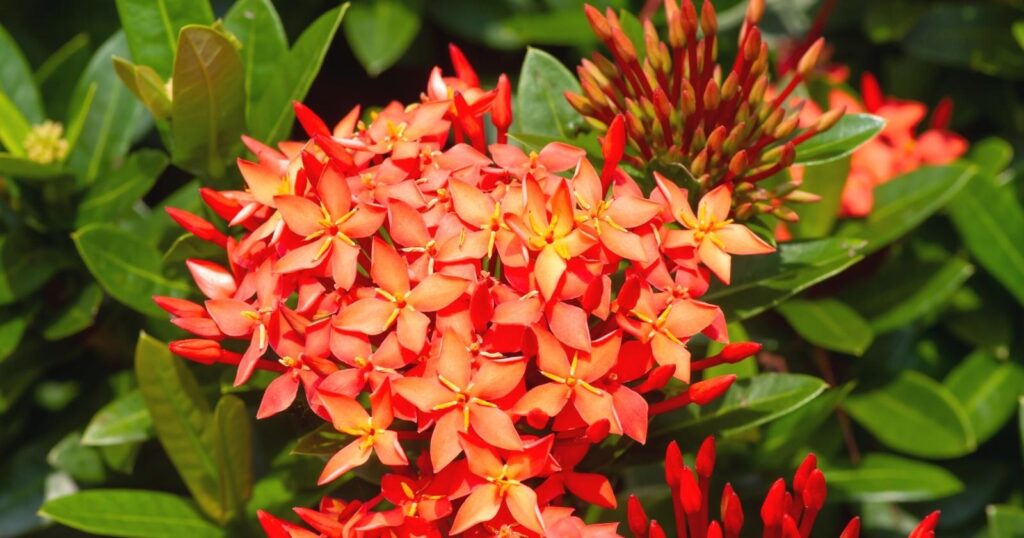
Scientific Name: Ixora coccinea
- Soil type: Well-drained
- Plant height: 6 feet
- Plant width: 1 to 2 feet
- Sun exposure: Full sun
- USDA zones: 9 to 12
A tall perennial shrub that you can easily trim to lower heights, the Ixora comes in citrusy shades like grapefruit red, lemon yellow, and sunny orange. Often used in South Texas gardens, the Ixora makes the perfect backdrop for floral arrangements, from monochromatic whites to bursts of rainbow blooms.
Resembling the gardenia, the Ixora offers beautiful clusters of flowers that can last up to six weeks at a time. Flowers generally bloom in the summer, but they are also known to appear throughout the entire year in some South Texas gardens.
Pineapple Guava

Scientific Name: Acca sellowiana
- Soil type: Well-drained
- Plant height: 10 to 15 feet
- Plant width: 10 to 15 feet
- Sun exposure: Full or partial sun
- USDA zones: 8 to 11
This shrub is another popular choice among South Texas gardeners for its rich foliage in shades of green. The Pineapple Guava also produces beautiful white blooms with red stems.
Pineapple guava trees yield a fruit that tastes similar to guava. Also known as Acca sellowiana, these shrubs are not the same as the well-known guava trees, although they do come from the same family.
These sweet-scented, vibrant blooms are known to attract several birds and make an excellent addition to your South Texas landscaping.
Mexican Petunia
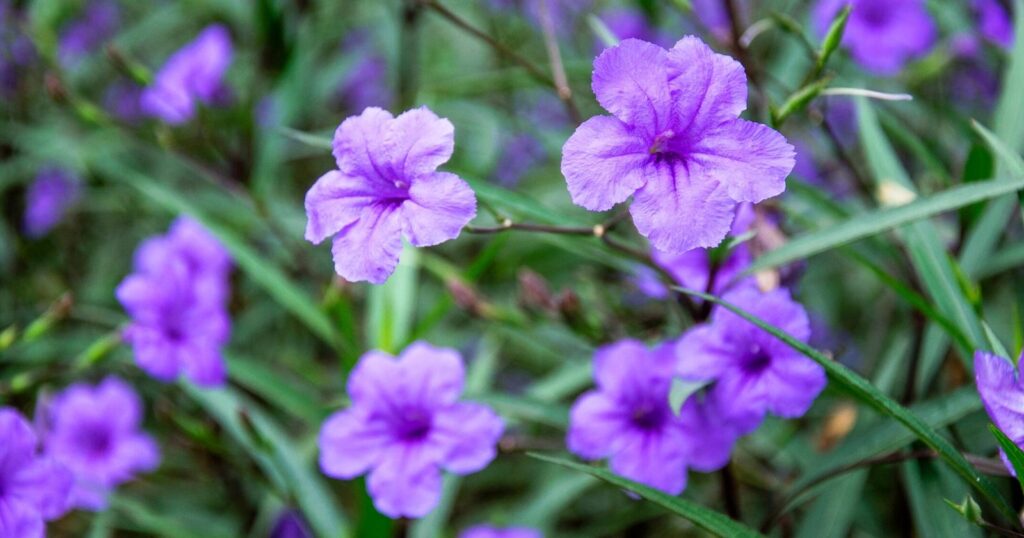
Scientific Name: Ruellia brittoniana
- Soil type: Well-drained
- Plant height: 2 feet
- Plant width: 1 to 2 feet
- Sun exposure: Full or partial sun
- USDA zones: 8 to 11
Many South Texas gardeners love these beautiful purple flowers for their heat tolerance and ability to spread easily. The Mexican Petunia also attract butterflies with their sweet-smelling nectar.
The Mexican Petunia is a hardy choice to brighten up your southern flower beds with tall or short stems to fit your placement needs.
Snap Dragon
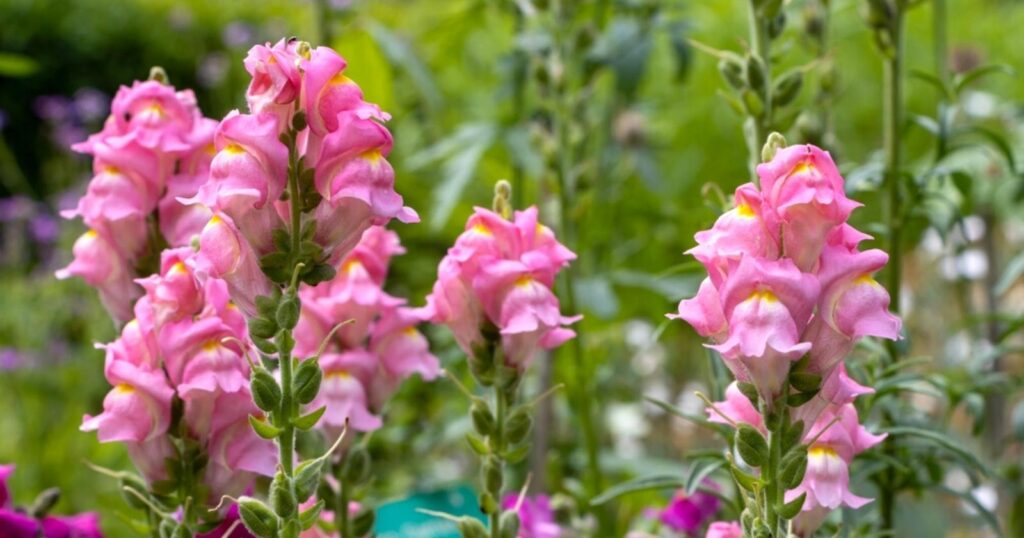
Scientific Name: Antirrhinum
- Soil type: Well-drained
- Plant height: 12 to 18 inches
- Plant width: 12 to 18 inches
- Sun exposure: Full or partial sun
- USDA zones: 7 to 11
This fast-growing lavender flower is an excellent choice for South Texan gardeners. The Snap Dragon blooms from early spring to the first frost of fall.
A root-hardy perennial, the Snap Dragon regrow every spring, even if damaged during the winter months. A very hard-to-kill plant, the Snap Daragon is also drought and disease-resistant. The perfect addition to your South Texas landscape.
Texas Sage
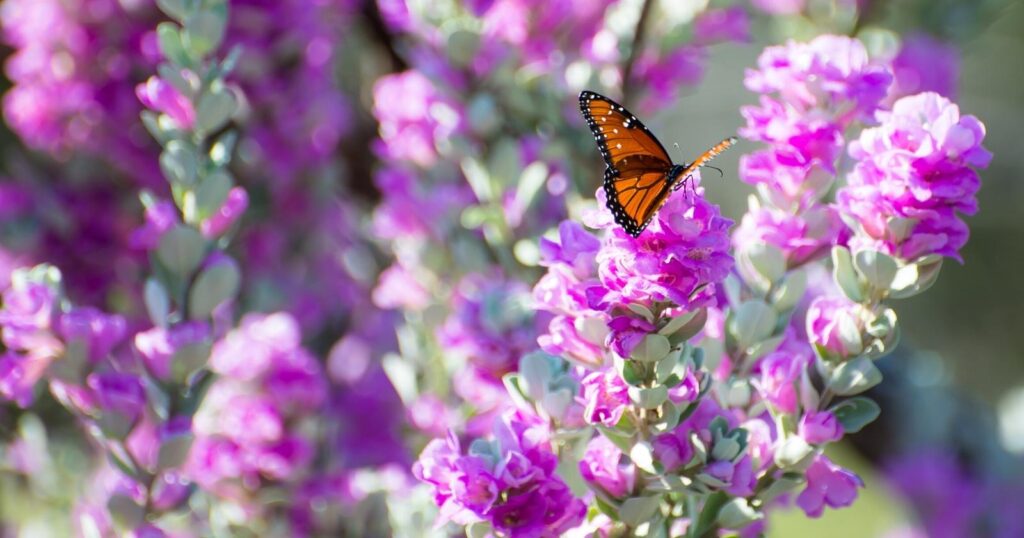
Scientific Name: Salvia coccinea
- Soil type: Well-drained, organic
- Plant height: 2 to 4 feet
- Plant width: 2 to 4 feet
- Sun exposure: Full or partial sun
- USDA zones: 8 to 11
This fall perennial shrub comes in various colored blooms, including red, white, or pink. The Texas Sage grows well in South Texas from early spring to the first frost of the season. The best time to initially plant this shrub is in the fall.
The Texas sage is a root hardy shrub and a popular choice for South Texas gardeners to use as borders. Their bright colored flowers also attract many hummingbirds to your garden
Yellow Bells
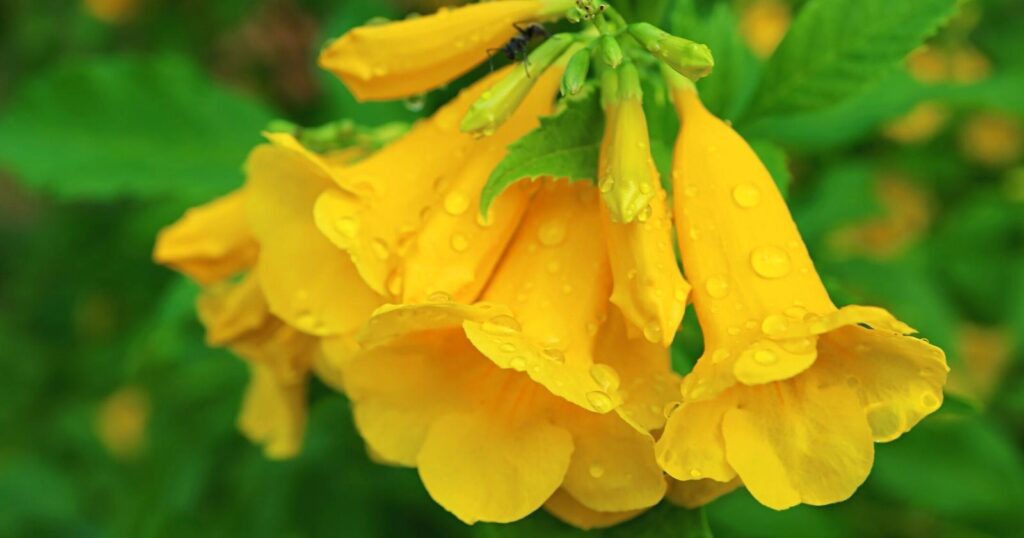
Scientific Name: Esperanza
- Soil type: Mildly alkaline
- Plant height: 6 to 8 feet
- Plant width: 4 to 6 feet
- Sun exposure: Full sun
- USDA zones: 8 to 11
This perennial shrub offers brightly colored yellow flowers that are bell-shaped and bloom the entire growing season in South Texas. Yellow Bells are proudly displayed on many properties throughout South Texas and offer a lemon hue that can dress up any flower bed.
Yellow bells are a hardy perennial and come up again every spring, even after a harsh winter. They are the perfect addition to your South Texas landscaping, sure to add various colors.
Yarrow
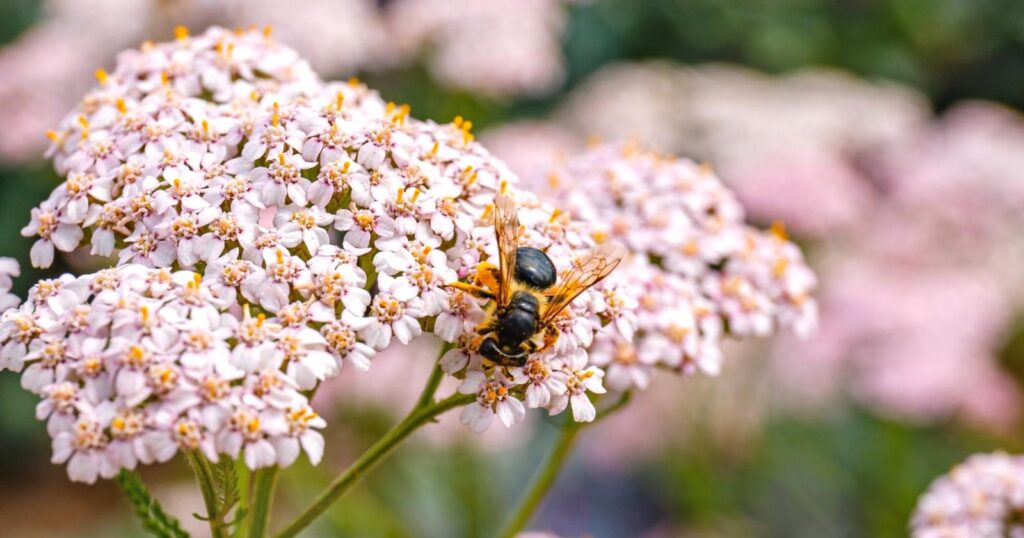
Scientific Name: Achillea millefolium
- Soil type: Sandy
- Plant height: 2 to 4 feet
- Plant width: 1 to 3 feet
- Sun exposure: Full sun
- USDA zones: 3 to 9
This South Texas perennial offers tiny flowers of yellow, pink, red, or white. They are magnificent for adding a splash of color to your garden and attracting butterflies.
Yarrows make the perfect cut flower because of their large colorful blooms and sturdy stems. They are the ideal addition to your South Texas landscaping.
Wrap Up
Once you have taken the time to consider all the factors associated with planting a perennial garden in North and South Texas, there is a vast selection of perennials to choose from. Some factors to consider before starting your gardening include climate, selecting the proper plants, and your desired color scheme.
By thinking about these requirements beforehand, you can ensure your perennials will look their best in their new Texan gardens. Whether you’re looking for shrubs, borders, or ground cover, several varieties of Texas perennials add a splash of color and charm to any Texan landscaping project.

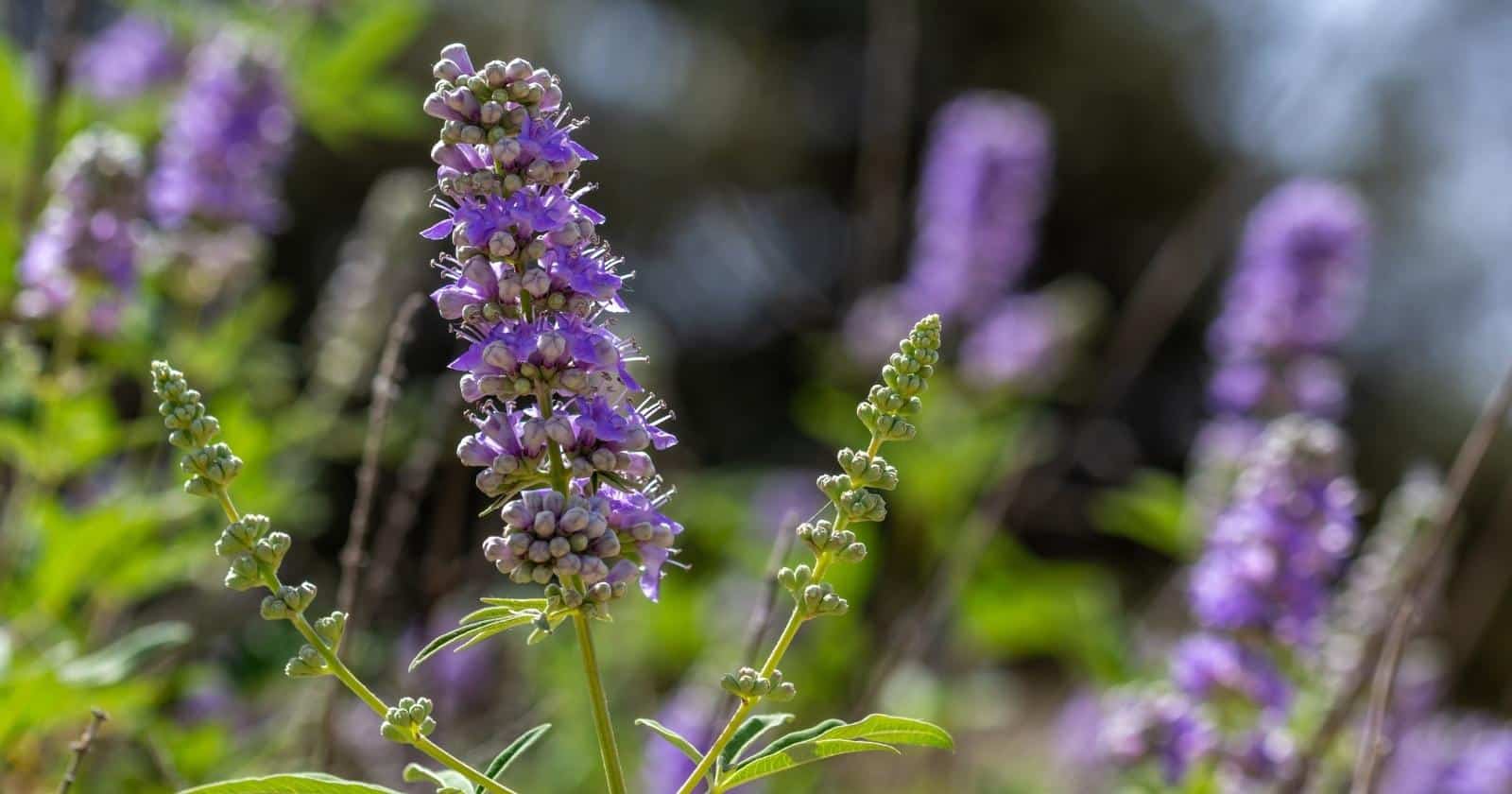
Leave a comment